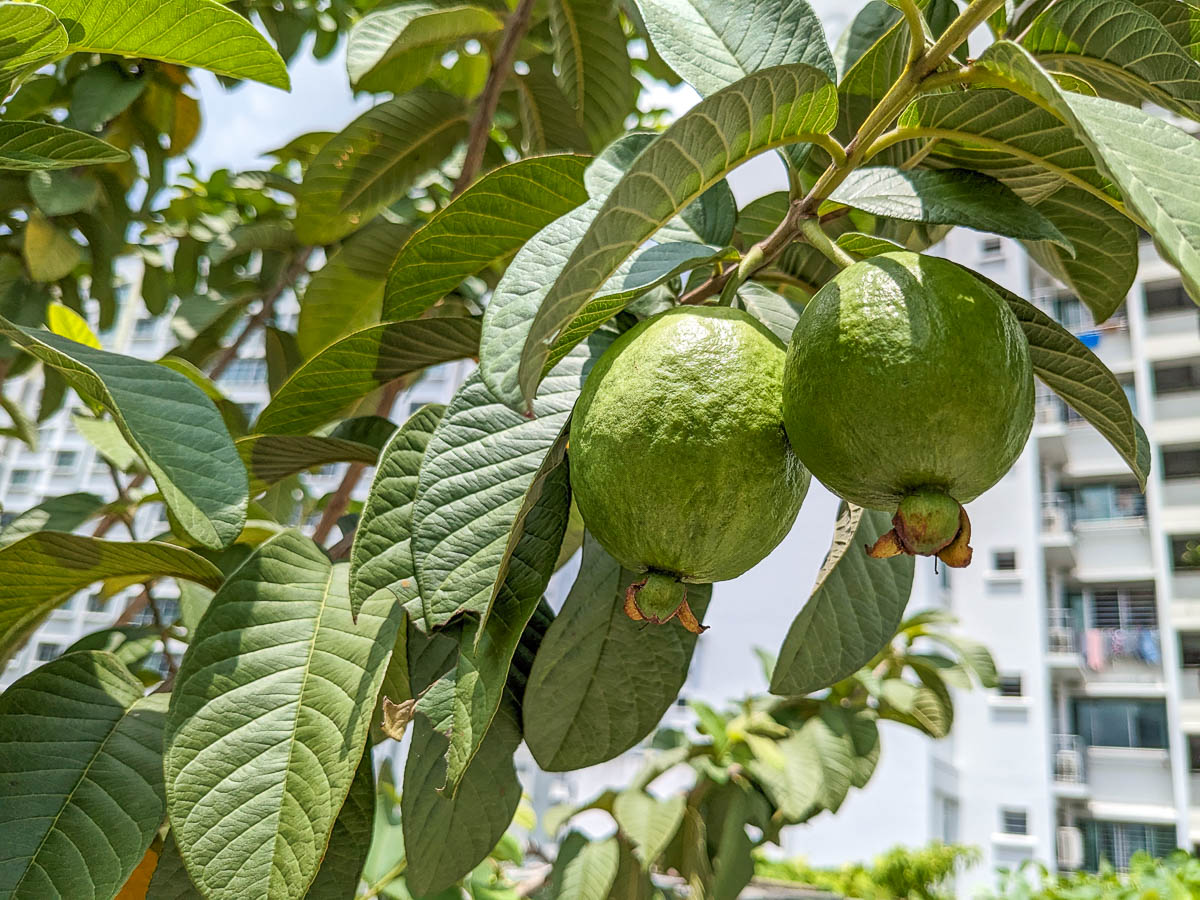Guava
Guava (Psidium guajava)
Other common names: Jambu Batu, Jambu Biji, Common Guava, Yellow Guava, Apple Guava, Jambu Kampuchia, 番石榴, 芭乐

Guava trees are common fruit trees in home and community gardens as they can grow in a wide range of soils and produce fruit all year long. Guava fruits are typically eaten raw, processed into desserts or candy, or drunk as a juice.
As a perennial tree, it is a common sight in edible gardens.
Sun and soil needs:
This tree does best in full sun gardens with a minimum of 6 hours of sunlight. This plant can also grow in areas with at least 6 hours of indirect sunlight, but growth will be slow and the plant will produce less fruits.
Plants do best in pots with loamy soil at least 1m deep, or in true ground. This tree is highly tolerant of a wide variety of soil types, from sandy to clayey.
This tree can grow up to 10m high. The tree is best maintained at roughly 2m high for easy maintenance and harvesting.
Sowing Seeds
Seeds can be sown directly into pots or the ground. Because the plant eventually grows into a tree, it is easier to grow a few seedlings in separate pots before selecting the healthiest one to be grown in true ground.
The seedlings are generally resilient to most environmental factors but may be vulnerable to being eaten by snails or birds. Protect your young plants with a DIY cloche or netting.
Growing:
Guava trees are steady growers but do benefit from being fed high potassium and phosphorus fertilisers to encourage flowering and thus fruiting. Regular pruning to promote airflow will keep the plant healthy and neat.
The tree will need to be around 5 years old before it starts producing fruit if grown from seed.
Harvesting:
Fruits are considered ripe when they are slightly soft to the touch but are not mushy. Ripe fruits will also have a strong, sweet fragrance. Fruits can be harvested unripe then left to ripen off the tree or harvested ripe for immediate consumption.
Propagation:
This tree is grown via seed, or via woody cuttings with rooting hormone.
Common problems & solutions:
If your plant has little to no flowers, you try fertilising the plant with fertilisers high in Phosphorus and Potassium. These nutrients encourage root and flower growth, which are important for the plant to produce more fruit.
Many plants require pollinators to help them fruit. Bees, butterflies, birds and even beetles transport pollen from one flower to another, pollinating your crops and increasing their fruit yield. Attract some pollinators to your garden by growing pollinator-attracting plants.
Aphids, Mealy Bugs, and Scale Insects often infest the plant if it has underlying problems like repeated wilting from heat stress. Mechanical pest control methods like pruning the infested parts are the best methods for managing these pests in the short term, but resolving the underlying problem will prevent them in the long term.
Fruit flies can lay eggs in the fruit, resulting in larvae damaging the fruit and creating spots on the skin. Wrap your fruit in netting when it starts to develop from a fertilised flower, ideally after all the petals have dropped off.
Wilting leaves during hot weather is a sign of heat stress. Increase the number of times the plant is watered daily, and apply mulch at the base to prevent water loss.
Birds and rodents may eat unripe or ripe fruit. Wrap your fruit in netting when it starts to develop from a fertilised flower, ideally after all the petals have dropped off.

